
Certain public-transit rides offer a lot more than plain conveyance. Great scenery, technological innovation, and historical significance await on ferries and funiculars around the U.S. The following are some of the most enjoyable and interesting public-transit offerings in the country. Our list is confined to public-transit systems, including bus, metro, and suburban rail, used primarily by local residents. (We exclude the many short legacy streetcar lines that have been developed in recent years primarily for sightseeing.) This east-to-west list is bookmarked by two systems known to much of the civilized world, but it includes a few surprises, too.
Image Gallery
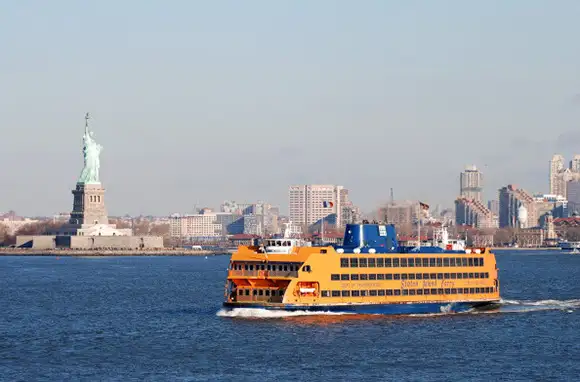
Staten Island Ferry, Staten Island, New York
This ride offers fabulous views of the lower Manhattan skyline, some renowned bridges, Ellis Island, and the Statue of Liberty—and it's free! What's not to like? The Staten Island Ferry operates 24/7/365, every 15 minutes during commuter rush hours, and every 30 minutes during off-peak times and on weekends. It connects Whitehall Street, on the lower tip of Manhattan Island, to St. George, on Staten Island, New York's isolated and relatively rural borough. The trip takes about 25 minutes each way for the five-mile journey.

Staten Island Ferry, Staten Island, New York
This ride offers fabulous views of the lower Manhattan skyline, some renowned bridges, Ellis Island, and the Statue of Liberty—and it's free! What's not to like? The Staten Island Ferry operates 24/7/365, every 15 minutes during commuter rush hours, and every 30 minutes during off-peak times and on weekends. It connects Whitehall Street, on the lower tip of Manhattan Island, to St. George, on Staten Island, New York's isolated and relatively rural borough. The trip takes about 25 minutes each way for the five-mile journey.
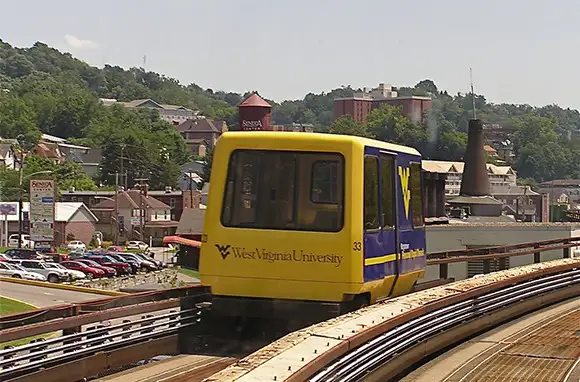
Personal Rapid Transit, Morgantown, West Virginia
This WVU Personal Rapid Transit is unique among U.S. public-transit systems, as it's sort of like a horizontal elevator. You get into a small single-unit automated cab and push a button for the destination station you want, and the vehicle takes you to that stop while bypassing any stops for which nobody pushed the button.
The five-mile line connects three distinct areas of the University of West Virginia. (The campus is attractive, in a hilly area about 75 miles south of Pittsburgh.) Because it's designed for WVU, it runs on an academic schedule and is completely closed during holidays and semester breaks.

Monongahela and Duquesne Inclines, Pittsburgh, Pennsylvania
Mt. Washington sits across the Monongahela River from downtown Pittsburgh. The hilly neighborhood is 367 feet higher than Steel City. Pittsburgh used to operate dozens of inclines, or funiculars, in the area. Today, only two remain: The Duquesne Incline, built in 1877, and the Monongahela Incline, built in 1870. Both are now integrated into Pittsburgh's extensive public-transit system. They carry people in flat-floor cars up tracks at angles of 30 to 35 degrees.
The Monongahela Incline is the more accessible, with its lower station adjacent to the rail-transit system, but the view from the Duquesne may be a bit better. Travelers who don't mind a bit of walking can go up one and down the other. The reward at the top is a great view of the central business district's skyline, many classic bridges, and the Golden Triangle park, where the Allegheny and Monongahela join to form the Ohio River.
Pittsburgh doesn't have the country's only inclines: Johnstown, Pennsylvania, has one that's even steeper, and Los Angeles has the short Angel's Flight. But the two in Pittsburgh are the most authentic public-transit examples.

South Shore Line, Chicago, Illinois
The Northern Indiana Commuter Transportation District (NICTD) operates the nation's last remaining electric interurban line. It originated as the Chicago South Shore and South Bend Railroad, commonly shortened to South Shore Line, during the great interurban boom in the early 20th century that saw hundreds of these railroads blanketing much of the country. Many went bankrupt during the era's frequent financial panics, and most of the survivors were done in either by the Great Depression or by competition from automobiles and buses. Rather than let the South Shore die, however, public interests in Indiana elected to buy it out and operate it as a commuter system.
For visitors, the most interesting destination is the Dune Park station for access to the Indiana Dunes National Lakeshore. The scenery between Chicago and Dune Park is mostly a depressing reminder of the decline of the area's once prospering steel industry, but the Indiana Dunes park is a deservedly popular visitor attraction. Trains operate all year, with better service on weekends than weekdays.
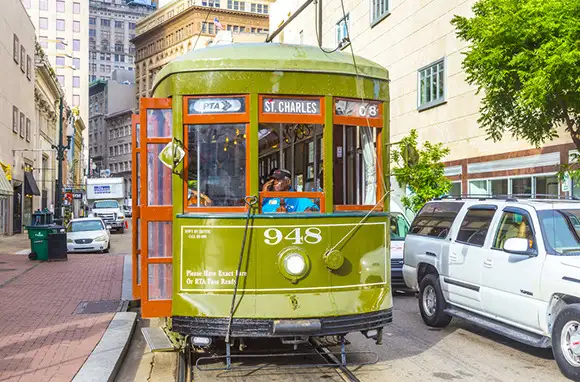
St. Charles Streetcar, New Orleans, Louisiana
Since 1835, the Perley Thomas streetcars on the St. Charles line have rolled past stately houses beneath a canopy of oaks. Today, historical cars built in 1923 still carry locals and visitors along Canal Street, past the French Quarter, through the Garden District, and past restaurants, boutiques, and parks. At one point, the line formed a complete loop, but now it's U-shaped. The line runs 24/7, including holidays. Other lines travel along Canal Street, but the St. Charles line is the longest and most interesting.
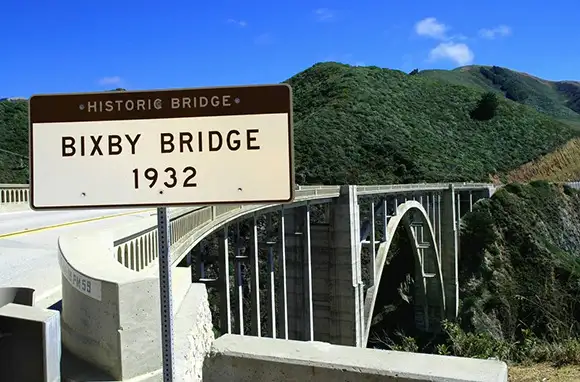
22 Big SurâMonterey, Monterey, California
Arguably the nation's most scenic public bus trip, the Monterey–Salinas transit route 22 Big Sur–Monterey runs from the Monterey Presidio and city center through terminally quaint Carmel, then along legendary Highway 1 to Big Sur and Nepenthe. You even cross Bixby Bridge, the spectacular concrete arch pictured in so many movies, TV episodes, and car commercials. Although you don't see the entire coastline, you see enough of the spectacular coast to make the trip a scenic blockbuster. Or, if you prefer, stop at one of the parks along the way.
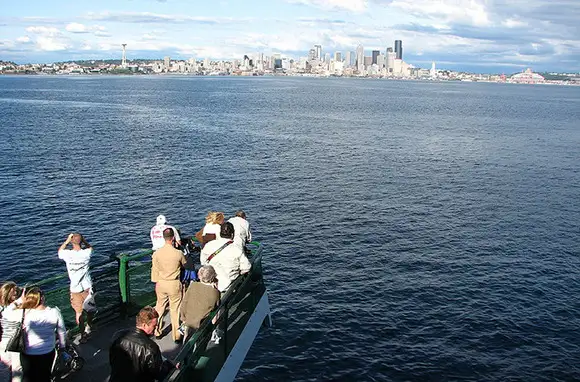
Bremerton Ferry, Seattle, Washington
Every day, thousands of commuters ride ferries linking Seattle's downtown with communities across the Puget Sound. Washington State Ferries operates 10 different routes, but for Seattle visitors, the Seattle/Bremerton route is probably the best choice. The 60-minute trip crosses usually-calm waters and provides views of Seattle's imposing skyline plus distant mountains and emerald islands. These large ferries include onboard food and beverage service, and you can ride inside or out, depending on the weather.

F-Market & Wharves Line, San Francisco, California
San Francisco's F Line operates heritage streetcars along a route linking two of the city's iconic neighborhoods, the colorful Castro district and Fisherman's Wharf, by way of bustling Market Street and along the waterfront Embarcadero. This trip provides great views of the city's many striking buildings, the busy bay, and Telegraph Hill. Muni, the local Municipal Transportation Agency, owns and operates a fleet of historical streetcars that is likely the envy of every railway museum in the country. The fleet consists mainly of post-World War II Presidents' Conference Committee cars and also includes 11 Peter Witt cars dating from 1928. Locals really use this line: Rush hour finds it seriously overcrowded.
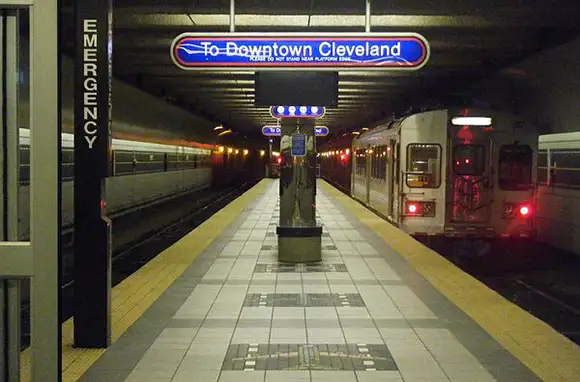
RTA Red Line, Cleveland, Ohio
Air and rail buffs will appreciate riding this public rail-transit system, which was the first in the U.S. to have a station integrated into an airport terminal. The rail extension to Hopkins International Airport opened in 1965 as the world's third such service. The Red Line runs from the airport to the Terminal Tower (the unofficial center for everything in Cleveland), then eastward on to Cleveland Heights.
There isn't much to see along the way unless you're a fan of declining industrial areas and railroad systems, and Cleveland Airport is not particularly outstanding in any way. This is admittedly one of the weaker entries on this list, but it still holds some interest.

Cable Cars, San Francisco, California
San Francisco's famous cable cars rattle along two primary routes: the Powell Street lines, between the Union Square area and either Fisherman's Wharf or Aquatic Park, and the California Street line, between the Ferry Building area and Van Ness Avenue. Both lines climb and descend steep Nob Hill, and the two lines cross at the foot of the historic Fairmont and Mark Hopkins hotels. You'll find lots of visitor-oriented facilities at the terminals of both Powell Street lines, but not so much at Van Ness Avenue and California Street.
At $6 a ride, the cable cars are intended to be used mainly by visitors rather than residents, although locals often use them anyhow. A reduced $3 senior fare applies only between 9 p.m. and 7 a.m. For more flexibility, you can buy an all-day unlimited-ride "visitor passport."
You Might Also Like:
We hand-pick everything we recommend and select items through testing and reviews. Some products are sent to us free of charge with no incentive to offer a favorable review. We offer our unbiased opinions and do not accept compensation to review products. All items are in stock and prices are accurate at the time of publication. If you buy something through our links, we may earn a commission.
Related
Top Fares From Columbus, OH
Today's Top Travel Deals
Brought to you by ShermansTravel
Shop and Save with Country Inns...
Patricia Magaña
 Hotel & Lodging Deals
Hotel & Lodging Deals
$229 -- Chicago: Discounted Rates and...
Francesca Miele
 Hotel & Lodging Deals
$229+
Hotel & Lodging Deals
$229+
$188 -- Honolulu: Save on Oceanview...
Abigail Lamay
 Hotel & Lodging Deals
$188+
Hotel & Lodging Deals
$188+



